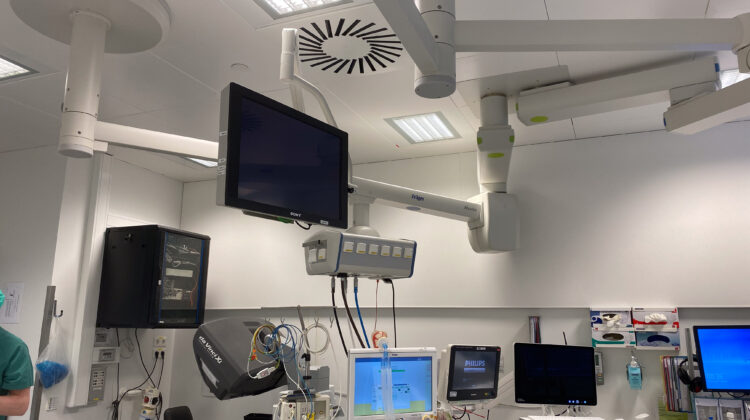
Operating rooms for robotic surgery require sound absorption for lowered sound levels and improved speech intelligibility.
Introduction
Operating rooms (OR) in hospitals are supposed to be quiet, controlled spaces that allow doctors and nurses to focus on performing complex surgeries. Unfortunately, the reality is often very different. Noise from medical equipment, combined with poor room acoustics, alarms, and conversations between staff members, can make it difficult to communicate effectively and lead to high levels of stress and fatigue among operating room staff. In this article, we will explore the impact of noise in operating rooms with a particular focus on poor room acoustics as a key factor. Join us as we delve into this critical issue and discover how we can create a more peaceful and efficient operating room environment.
Why do acoustics need attention?
Lowered noise levels in the OR
Over the last 40 years, the average noise level in hospitals has increased. Operating rooms are particularly noisy, especially rooms for orthopedic surgery, where sound peaks can reach 130 dB! Sound levels at that level are very loud and can severely damage your hearing. The average background noise level is commonly too high, which affects the staff’s ability to communicate to a degree that ensures important information reaches the recipient as intended. This affects the stress levels of both staff and patients.
What can we do to reduce this noise? We have to act on a combination of topics; change human behavior, lower functional sounds on med-tech devices, and use sound-absorbing materials to counter excess sound energy and unwanted reflections!
Sound-absorbing material can improve the sound environment, as shown in several studies. The effect has an impact on the staff´s work environment, well-being, stress, and the patient´s experience of receiving care. For many operating rooms, acoustic treatment can comply with hygiene demands, thus this can differ in different countries.
Case description
Noise level reduction needed
This article is based on interviews, measurements and surveys conducted in a regional hospital in Norway1 that serves a population of ~500.000 people and conducts approx. 17000 operations every year. The existing hospital were built in the 1970s. Even though the actual OR was built in 2015, it still does not meet the acoustic regulations. The hospital will be replaced within a few years, as one of many new Norwegian health care facilities during the 2020s. The staff have experienced severe noise problems in some specific ORs, that needed an easy and quick solution to create a better working environment.
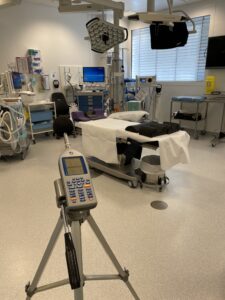
The most challenging OR is being used for robotic surgery. The “Da Vinci” robot is a constant source of noise, with its fan-hum. The room is approx. 60 sq m, with no sound-absorbing material (metal ceiling, gypsum walls). The equipment and furnishing of the room create diffusion, which is positive for the reverberation time (RT). Reverberation time was measured at 0,73 sec (125 – 4000 Hz). The maximum RT according to Norwegian building regulations is 0,6. The exceedance of 0,13 seconds makes a noticeable difference in the perceived room experience.
The LAeq level during a 1-hour measurement during surgery was 68 dB. According to The Norwegian Labour Inspection Authority’s 704-ENG Regulations concerning Action and Limit Values, the average sound pressure level should not exceed 55 dB during surgery. A report from Oslo University Hospital concludes that in a sound environment similar to the one referred to in this article, surgery should only be performed 10% of every hour. From a realistic perspective, this is not possible. Measures must be taken, on both the general sound level and the acoustic treatment of the room.
Wall absorption as a solution
Because of the ongoing building of a new hospital, and therefore the short life span of any new installations, it was decided to leave the metal ceiling. To enhance the sound absorption, approx. 15 sq m of wall absorbers – Ecophon Care Wall™ were installed. This is a 40 mm mineral wool absorber, with a surface suitable for hygienic applications, like ORs, in hospitals.
The acoustic measurements after the installation of the wall absorbers show a reverberation time of 0,5 sec (125 – 4000 Hz). This is a big improvement, and there is a noticeable difference in the room’s acoustic performance. The LAeq was reduced by 4,5 dB, to 63,5 dB during a relatively comparable surgery over 1 hr. A 4,5 dB reduction is more than half the sound energy and is considered a “noticeable difference”. However, these are all just numbers, important of course but how is the sound environment perceived by the staff?
Staff experience
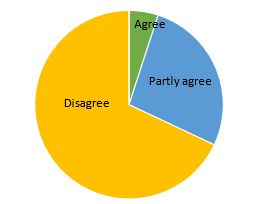
Noise is a severe problem for the staff
Most importantly the survey shows that the staff experienced severe noise problems before the acoustic improvement was done. Clearly, communication appear to be the biggest problem in the OR, as speech perception suffers due to the general sound level in the OR. The sound level pressure is at such a high level, that fatigue becomes a problem for the people working in the room. These factors affect the staff’s ability to perform their best throughout the day and also affect their lives outside of the hospital. Staying focused in such a demanding environment for long days, in this environment is demanding. The staff reported a loss of energy and ”social capacity” resulting in less energy for their family and free time activities.
Key findings in a survey conducted on the staff working in the OR.
- The survey includes anesthetic-, surgery- and nurses in the operating room (42 respondents)
- 83% have more than 2 years of experience
- 93% of the staff believe the sound environment may affect the ability of the staff to do a good job and
- 67% of the staff believe the sound environment may affect the patient negatively, when awake
- None of the staff says it is easy to perceive speech in the OR
- 69% of the staff believe the sound environment makes it hard to concentrate
- All of the staff say the noise may lead to misunderstandings
Robotic surgery
Precise but noisy
The Da Vinci robot is a modern tool for minimally invasive robotic surgery. For example, the robot itself has three to four interactive arms, on which different objects such as scalpels, scissors etc are mounted. The device is operated from a separate console with joysticks, and camera view via the robotic arms. The operating console is placed in the same room but requires communication with the OR team via a microphone.
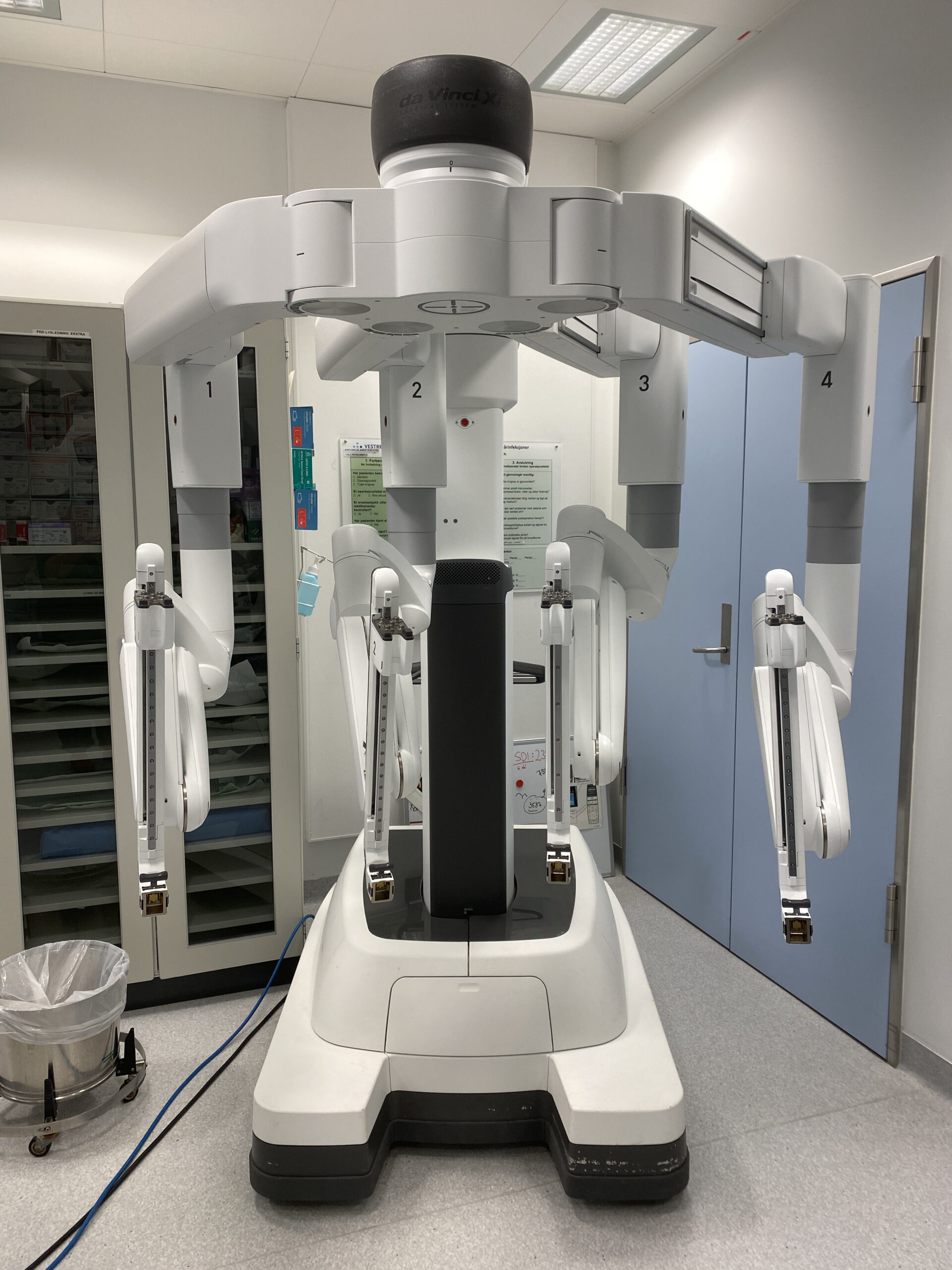
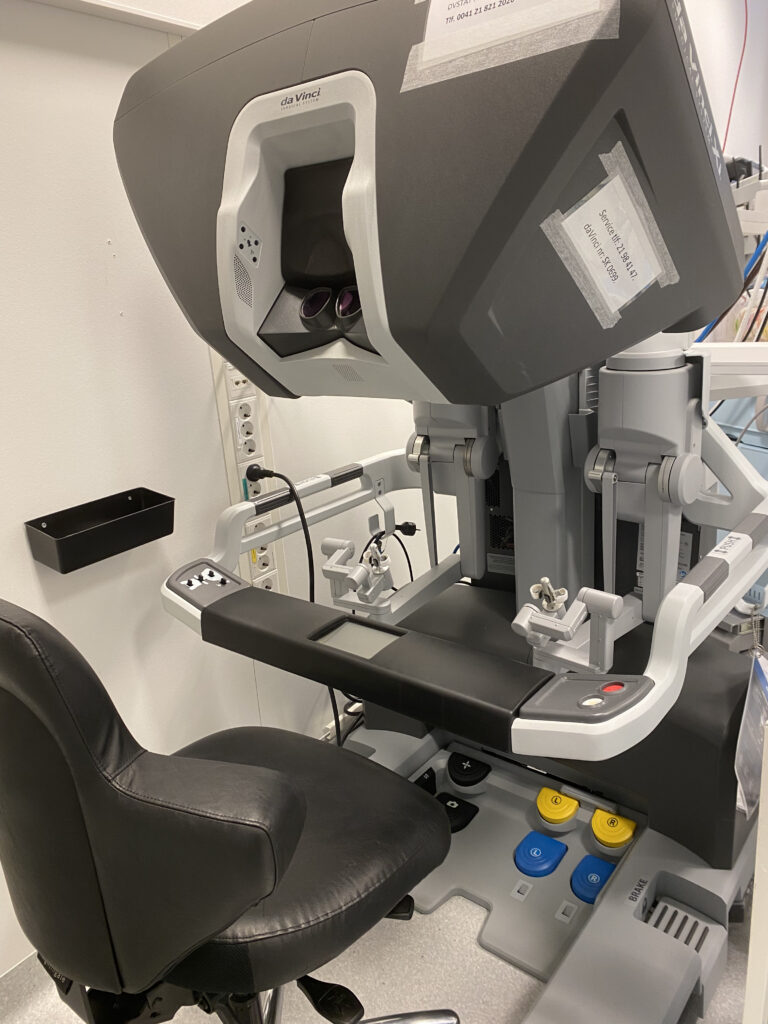
The operating sound of the Da Vinci consists of constant fan-hum and beeping noises confirming the operator’s actions. As it needs to be placed in the middle of the room close to the patient and is a constant source of noise it negatively influence communication for the staff.
Summary
It is important to be aware of room material’s effect on several sound parameters as the OR is often exposed to disturbing noises. Moreover, technical development, such as robotic surgery, is adding new sound sources influencing the room acoustics. In conclusion, sound-absorbing materials affect reverberation time (RT), speech clarity and sound pressure level positively, with an important impact on both staff and patients. RT in operating rooms has a limit of <0,6 sec in the Norwegian standard. Although the acoustics limits are met the work environment is acoustically challenging, as expressed by the staff. The use of wall panels in addition to an acoustic ceiling will positively impact both reverberation time and speech clarity. We need to pay attention to what happens with spoken communication when new sound (noise) sources are added into the operating room!
References:
Hsu T, Ryherd E, Persson Waye K, Ackerman J. Noise pollution in hospitals: impact on patients. J Clin Outcomes Manag 2012;19:301–9.
McNeer, Richard R. et al: Factors affecting acoustics and speech intelligibility in the operating room: Size matters. www.anesthesia-analgesia.org June 2017 • Volume 124 • Number 6.
Frida Bårdsen: Støykartlegging ved Operasjon 1, stue 10 og ekspedisjon, RH.
Arbeidstilsynet. Noise, 2022. URL: https://www.arbeidstilsynet.no/tema/stoy/
Arbeidstilsynet. 2020. URL: https://www.arbeidstilsynet.no/en/laws-and-regulations/regulations/regulations-concerning-action-and-limit-values/
Further reading:
Modular operating rooms – how do they really sound?
Modular operating rooms provide good acoustics for surgeons
Acoustics affect staff in the OR
- Due to the hospital’s confidentiality requirements, this article has been anonymized. ↩︎

